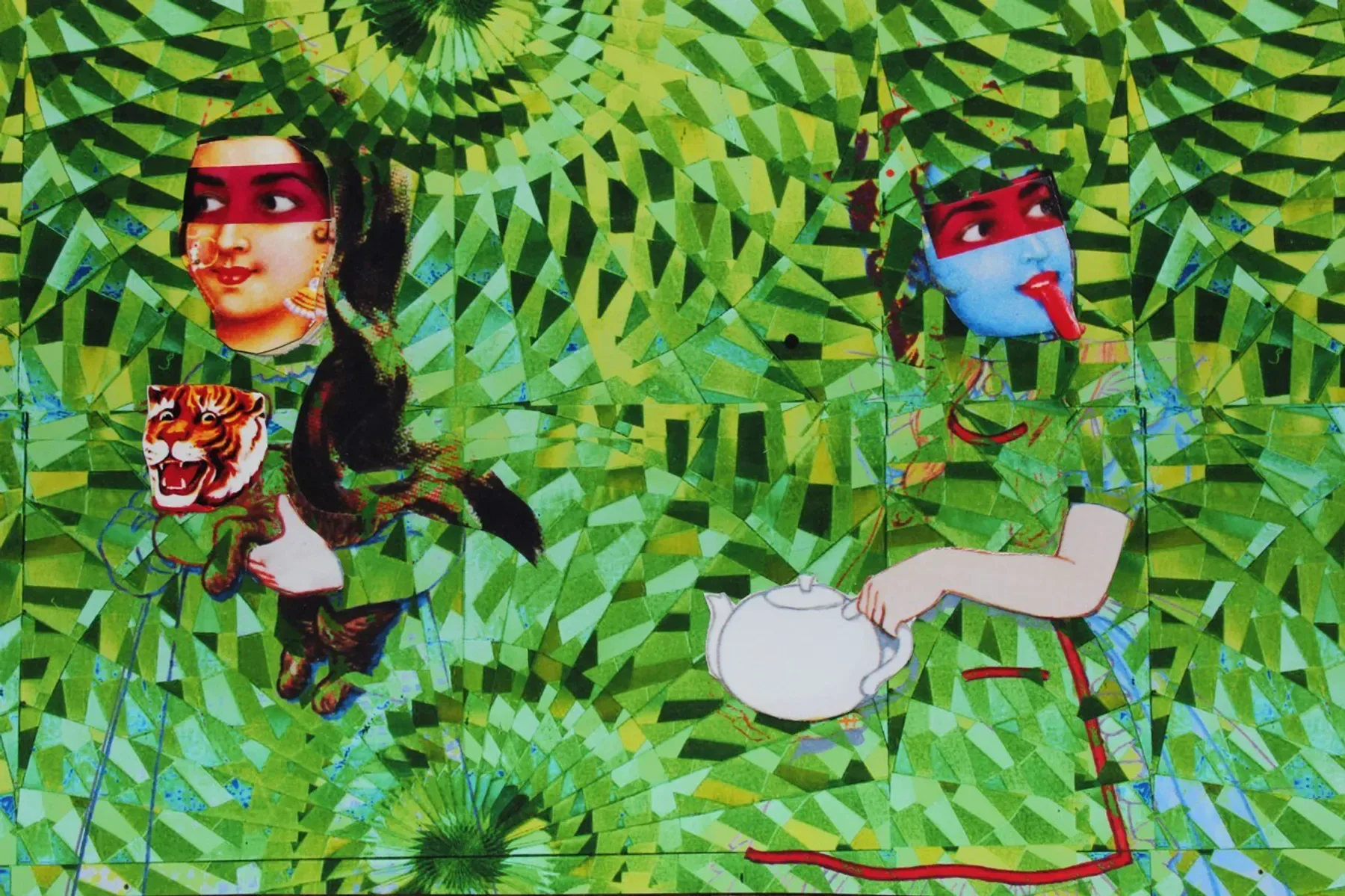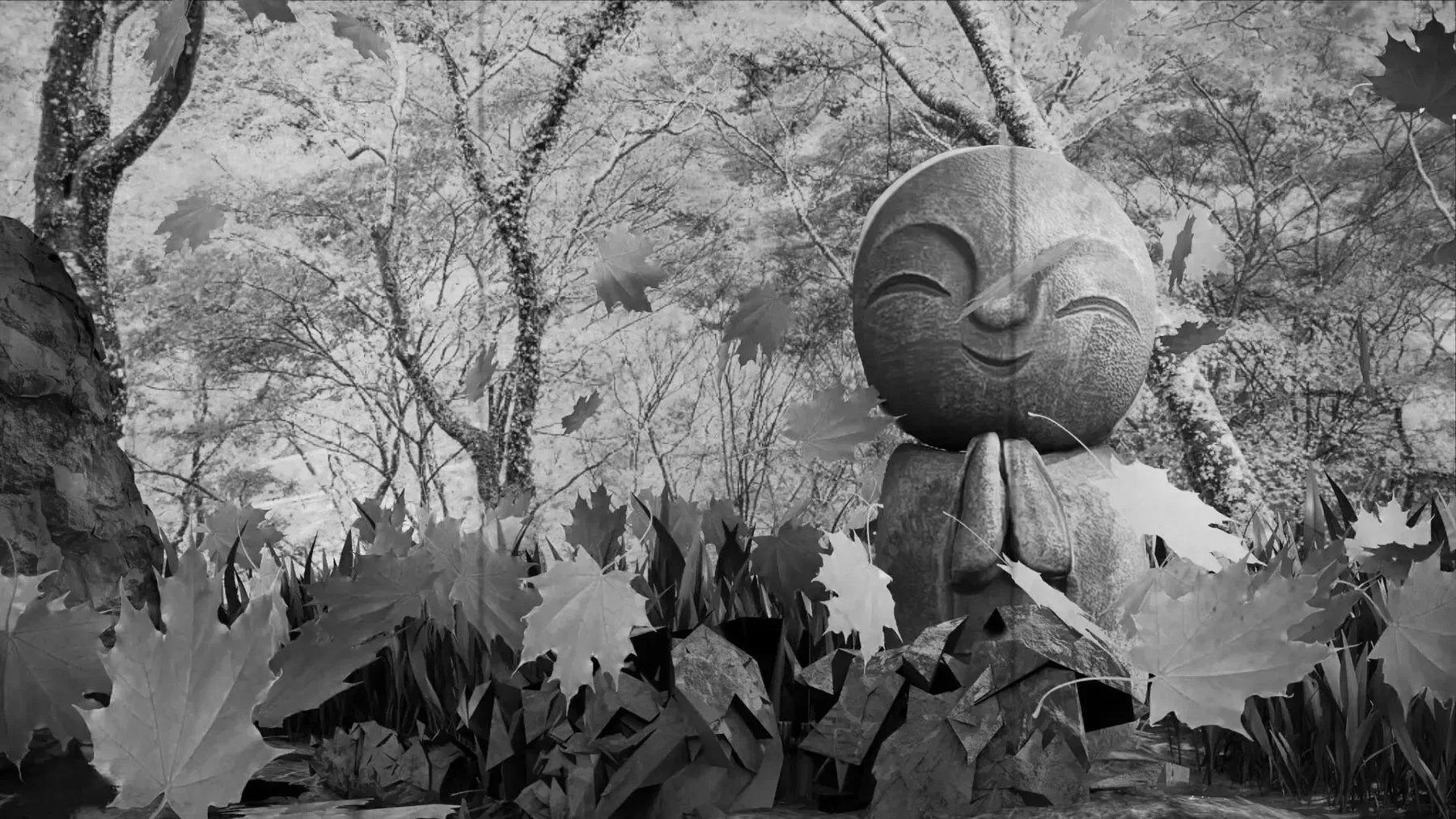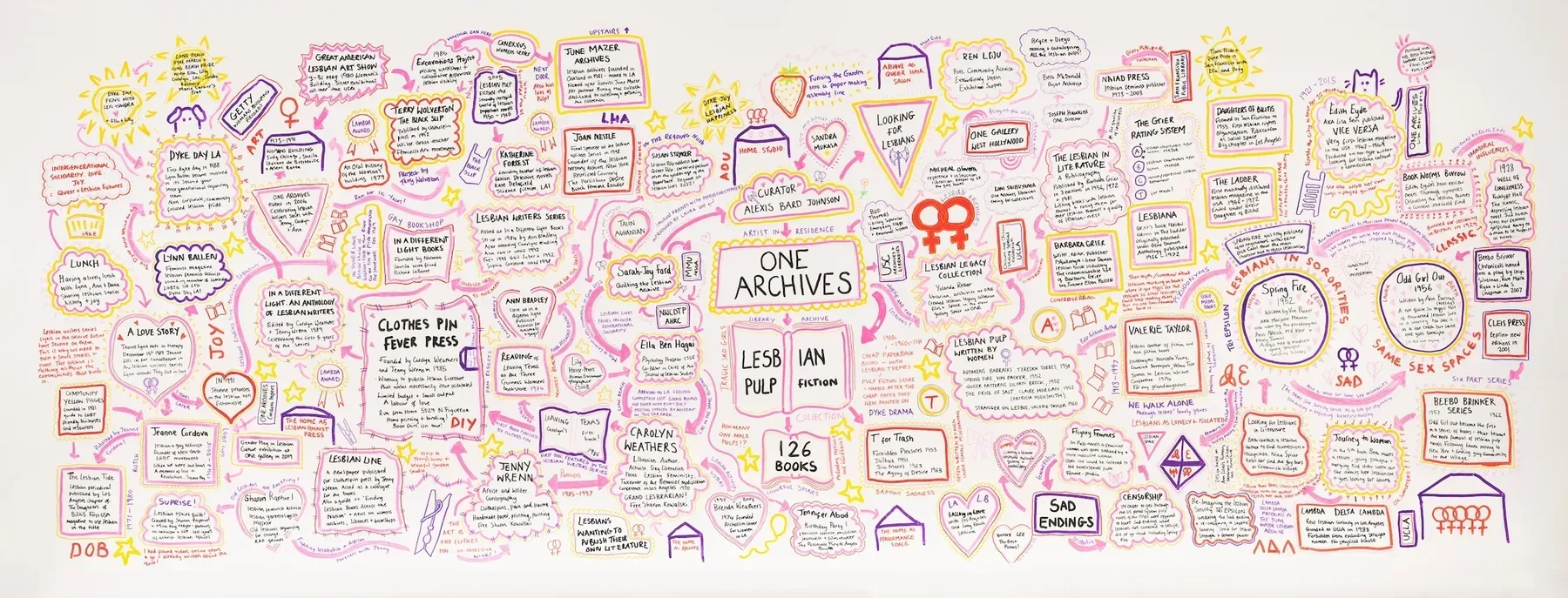Here, There & Elsewhere: Encountering Ghosts, Forests & Archives
This month we have invited Artist and Filmmaker Eelyn Lee to curate a selection of Axis Members' work using the Axis Gallery.

The Emerald City 1, 2020 by Meera Chauda
Eelyn's art practice combines collective research, devised theatre, screen writing and filmmaking to create frameworks for collaboration. Her Hong Kong/English heritage motivates her interest in race, identity and 'othering'. Featuring: Ainsley Hillard, Alice Banfield, Uma Breakdown, Meera Chauda, Ngo Chun Tse, Madi Acharya-Baskerville, Lisa Temple-Cox, and Sarah-Joy Ford.
For some East and Southeast Asian cultures, Ghost Month begins on the 8th of August this year. A time when the deceased are believed to visit the living, it’s not a good idea to walk down dark alleyways or take the last bus home. But treated with care and offerings of nourishment, the hungry ghosts will eventually return to their spiritual realms, at least for another year.
I’ve been spending a lot of time in the archives lately. Haunted by a Chinese baby, buried in my home town of Sheffield in 1855, I’ve been searching for stories that are hidden from view –but they’re there if you look with the right eyes. There are lonely ghosts residing between the gaps of the history books, diaries and maps, hungry for their stories to be told.
Diasporic memory can behave like double vision –you can look at a Yorkshire landscape and hear the sounds of a bamboo of forest. The interconnectedness between body, time and place, can unearth memories from here, there and elsewhere.
In this selection of artwork, multiple realms co-exist –the past and the present; the real and the fictional; the physical and psychological; the here and faraway. This simultaneity runs through each work. A timely gathering for Ghost Month - when the dead walk amongst the living, and the past is very present - a good time for disruption and transition.
In Ainsley Hillard’s ‘Flow’ a shadow of a body is woven with light thread. A ghost - a trace of an existence. The figure appears to be in deep contemplation - two versions of the same - connected. One is unravelling to create the image of the other - a constant state of flow. When hung together, Ainsley’s weavings evoke the presence of a haunted forest.
Alice Banfield takes inspiration from Ursula K. Le Guin, where the forest is a metaphor for the mind. Alice uses the forest as a method for world building –a place to manifest their own experiences of being neurodivergent. When devils parade with daffodil masks, what more-than-human rituals take place in the forest of the mind?
Le Guin’s forest is also a place of terror. In Uma Breakdown’s Salem’s Lot we witness a moment of ‘becoming vampire’. The figure is transitioning from interior to exterior, from human to beast. The night forest and its shadowy demons await.
Meera Chauda appears alongside Kali in The Emerald City, the capital of the fictional Land of Oz. At the end of the Yellow Brick Road, the shimmering green metropolis, with its glass prisms and fractured light, is home to a fake Wizard peddling lies. ‘Mapping the confusion and complexities of home, heritage, legacy and place’, Meera places herself in the story - in a forest-like Emerald City - a place of terror; smoke and mirrors, and obfuscation. This is a place where the big lie of meritocracy is peddled. But with the companionship of Kali, maybe this brown body will dismantle the glass ceiling.
Observing the disappearance of the ghost in Asian cinema, in Seance, Ngo Chun Tse builds an archive of lost films. This convoluted seance involves finding old media players and ‘work-arounds’ in order to be able to play lost cinematic works. What happens when ghosts lack the machines and mechanisms to conjure them? Ngo Chun notices the ‘ambiguity of historical and material memory’, highlighting the unreliability of the archive.
Madi Acharya-Baskerville’s Batik Orifice is an entanglement of wood and silk batik. ‘Collaged from experiences rather than a product of stark reality’, the work evokes the anatomy of an unknown creature. A creature with lost origins, or a relic from the near future?
In Archipelago, Lisa Temple-Cox delves into her own archive to create a personal archipelago of her mixed Malay-English heritage. Here ghosts of people and places are nestled within an interconnected cluster of small islands. Mapping these islands would create a constellation of memory, hybridity and journeys of [de]colonisation.
Dr Sarah-Joy Ford’s, Looking for Lesbians: A Los Angeles Atlas, chronicles her encounter with an institutional archival –ONE Archives, the largest repository of LGBTQ materials in the world. ‘Untangling and re-tangling some of the threads of lesbian history and activism’, the work maps Sarah-Joy’s process. The fluidity of form captures a complex set of relations –conversations with the dead and the living sit alongside the artist’s subsequent reflections. Past, present and future rub up against each other and begin to hum –a polyphony of voices resonating through time and space.








Artists
Ainsley Hillard , Alice Banfield , Uma Breakdown , Meera Chauda , Ngo Chun Tse , Madi Acharya-Baskerville , Lisa Temple-Cox , Sarah-Joy Ford , Eelyn Lee
Tags, Topics, Artforms, Themes and Contexts, Formats
Share this article
Helping Artists Keep Going
Axis is an artist-led charity supporting contemporary visual artists with resources, connection, and visibility.


